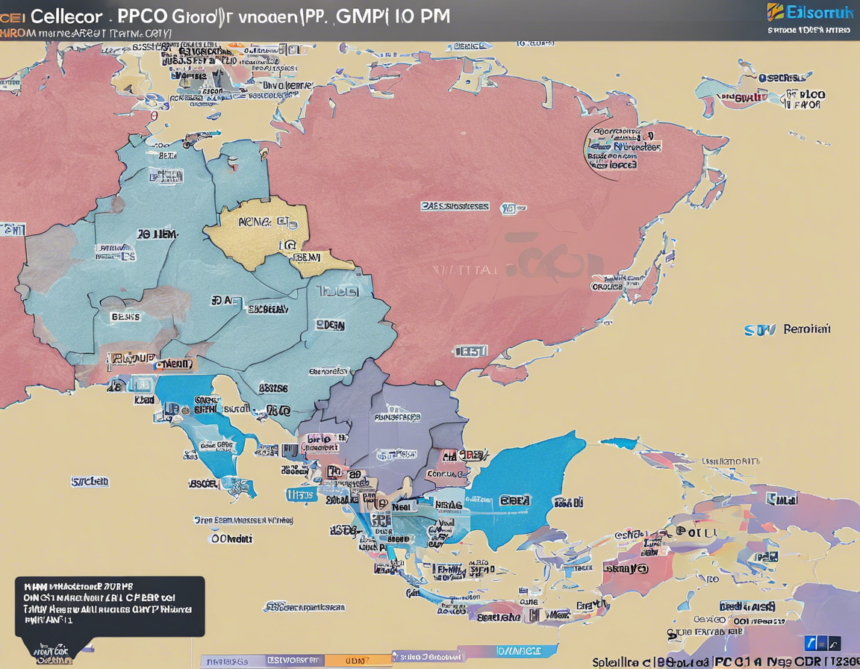The Cellecor IPO has been the talk of the town recently, with investors keeping a close eye on the Grey Market Premium (GMP) to gauge market sentiment and potential listing gains. Understanding how the GMP works and its significance can provide valuable insights for investors looking to participate in the IPO. In this article, we will delve into the Cellecor IPO and break down what GMP means, how it is calculated, and what it indicates about the upcoming IPO.
Cellecor IPO Overview
Before we delve into the intricacies of the GMP, let’s first understand the basics of the Cellecor IPO. Cellecor, a leading player in the telecommunications industry, is gearing up to go public by offering its shares to investors for the first time. The IPO allows investors to buy shares of the company and become part-owners, potentially reaping the benefits of the company’s growth and success in the future.
What is Grey Market Premium (GMP)?
The Grey Market Premium (GMP) is the premium at which the shares of an IPO are trading in the unofficial or grey market before they are listed on the stock exchange. It reflects investors’ expectations regarding the listing price of the company’s shares once they are officially listed for trading.
How is GMP Calculated?
The GMP is calculated based on the demand and supply dynamics of the shares in the grey market. If the demand for the shares is high and the supply is limited, the GMP tends to be positive, indicating a potential listing gain. Conversely, if the demand is low or the supply is high, the GMP may be negative or even zero.
Significance of GMP in the Cellecor IPO
For investors looking to participate in the Cellecor IPO, monitoring the GMP can provide valuable insights into market sentiment and potential listing gains. A high GMP indicates strong investor interest and confidence in the IPO, suggesting that the listing price could be higher than the issue price, leading to potential short-term gains for investors.
Factors Influencing GMP
Several factors can influence the GMP of an IPO, including market conditions, company fundamentals, industry outlook, and overall investor sentiment. Positive news about the company, strong financial performance, and bullish market trends can drive up the GMP, while negative developments may lead to a lower or negative GMP.
How to Interpret GMP for the Cellecor IPO
When evaluating the GMP for the Cellecor IPO, investors should consider it as one of the indicators of market sentiment and potential listing gains. However, it is essential to conduct thorough research on the company’s fundamentals, industry trends, competitive landscape, and growth prospects before making an investment decision solely based on the GMP.
Key Takeaways
- The Grey Market Premium (GMP) reflects the premium at which IPO shares are trading in the unofficial market before listing.
- Monitoring the GMP can provide valuable insights into market sentiment and potential listing gains for investors.
- The GMP is influenced by factors such as demand-supply dynamics, company fundamentals, industry outlook, and overall investor sentiment.
- While GMP is a useful indicator, investors should conduct thorough research before making investment decisions based solely on GMP.
FAQs (Frequently Asked Questions)
Q: What is the significance of GMP in an IPO?
A: The GMP indicates market sentiment and potential listing gains for investors looking to participate in an IPO.
Q: How is Grey Market Premium (GMP) calculated?
A: The GMP is calculated based on the demand and supply dynamics of shares in the grey market before the IPO is officially listed.
Q: Can GMP predict the listing price of an IPO?
A: While GMP can provide insights, it may not always accurately predict the listing price due to various market factors.
Q: What factors influence GMP?
A: Factors such as market conditions, company fundamentals, industry outlook, and investor sentiment can influence the GMP of an IPO.
Q: Should investors rely solely on GMP to make investment decisions?
A: It is essential for investors to conduct thorough research on the company, industry, and market trends before making investment decisions solely based on GMP.


Leave a Reply